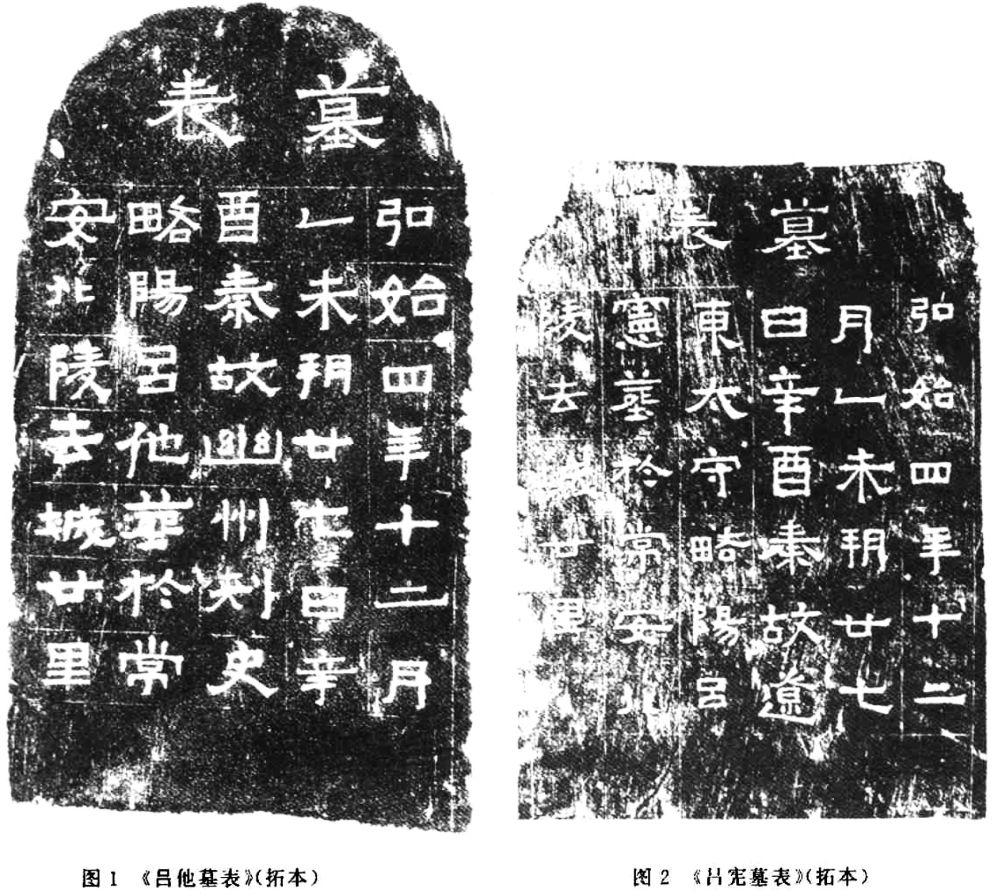Mubiao 墓表 are tomb inscriptions carved into stone tablets or steles placed in front of a tomb. They are a subtype of stele inscriptions (beiwen 碑文, beiming 碑銘). The term originates from the function of "presenting" (biaozhang 表彰) the achievements of a deceased to the public. A similar term is qianbiao 阡表, where qian refers to another word for the grave path (mudao 墓道) or "soul path" (shendao 神道) leading to a grave. Such inscriptions can also be carved on stones imitating gates that lead to a grave or a tomb chamber (mumen shi 墓門石, shi mumen 石墓門).
The inscription is a kind of laudatory biography of the tomb owner, explaining his origins, listing his official career positions, and praising his achievements in social and scholarly life. The word mubiao is sometimes used similarly to inscriptions on steles placed along the "soul path" (shendao bei 神道碑). Because of their historiographical value and literary quality, a large number of tomb inscriptions are preserved, even if the objects themselves are long lost. The oldest date from the Eastern Han period 東漢 (25-220 CE), such as the inscription Yezhe Jing jun mubiao 謁者景君墓表, but they flourished during the Tang 唐 (618-907) and Song 宋 (960-1279) periods. Most famous are the inscriptions Shi Manqing mubiao 石曼卿墓表, Longgang qianbiao 瀧岡阡表, and Taichang boshi Zhou jun mubiao 太常博士周君墓表, written by Ouyang Xiu 歐陽修 (1007–1072); Baowenge daizhi Chang gong mubiao 寶文閣待制常公墓表 by Wang Anshi 王安石 (1021–1086); Wang You Fang Sizheng mubiao 亡友方思曾墓表 composed by Gui Youguang 歸有光 (1506–1571); Zeng Guofan's 曾國藩 (1811-1872) piece Wuchang Zhang fujun mubiao 武昌張府君墓表, and Huang Kan's 黃侃 (1886-1935) Tong xiansheng mubiao 童先生墓表.
Tomb inscriptions of the type mubiao are written in prose and could be used for both high-ranking officials and commoners. This was the main difference from mubei 墓碑 and mujie 墓碣, the use of which was restricted to office holders.
Before the interment, laudatory tablets were placed in front of a coffin. They were known as lingbiao 靈表, meaning "spirit tablets," or binbiao 殯表, meaning "tablets commemorating persons laid out." These texts might be identical to those inscribed into stone later on, but some commemorative texts are preserved with titles including the terms lingbiao or binbiao. A special expression for texts presented during the wake is quancuo 權厝.
 |
Rubbing of two grave tablets from empire of Later Qin. From Lu 2001. |